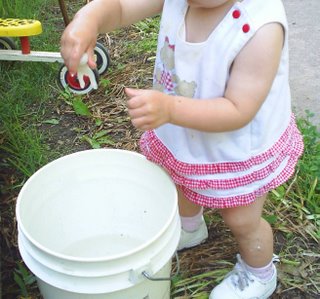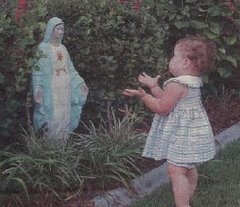 The last couple of days I've visited three liquor stores. No, not to partake of their bottled and canned beverages, but to get the heavy boxes. They are good for storing apples between sheets of newspaper and they don't cost anything.
The last couple of days I've visited three liquor stores. No, not to partake of their bottled and canned beverages, but to get the heavy boxes. They are good for storing apples between sheets of newspaper and they don't cost anything.The grandkids love apples. Yesterday I cut and peeled some for one of the littlest ones, and she came back for more. Even though she is little, she helped her two older sisters to make apple strudle. My Grandma taught me how to pull the dough made with flour, eggs, butter, and water. She used no recipe, so I had to find one on the web.
Once I added the word "rest" to "strudle" in my search, I came up with a suitable recipe. "Rest" refers to the minimum 30 minute period the dough has to sit undisturbed. Something important happens to the dough when it rests--it becomes very stretchable. The oldest granddaughter spent 10 minutes kneading the dough and said her hands were tired. We had forgotten the butter, so it was slowly added to the already kneaded dough and I had to knead ten minutes before the dough was allowed to rest.
The two oldest granddaughters and I peeled and sliced apples, and sugar, flour, lemon juice, and cinnamon were added. All three granddaughters and I rolled the dough on a floured cloth to as thin as we could we get it, but it wanted to shrink back to its former size. Fingers from eight hands were gently placed under the thinned dough to pull it slowly outward to make it large and thin. [It really helps to have four people stretch the dough!]
The first batch wasn't as good as the second batch when everyone knew they
 had to avoid holes in the paper-thin dough. The girls got the hang of it fairly quickly (even the 3-year old), and acted as if they were having fun!
had to avoid holes in the paper-thin dough. The girls got the hang of it fairly quickly (even the 3-year old), and acted as if they were having fun!The sliced apple mixture was added next. The girls arranged the apples so the slices were only one layer deep, and then the oldest girl helped me roll the dough and slide it into the pan greased by the 3-year old. The top of the strudle was painted with egg whipped by the middle granddaughter so the strudle would have a pretty glaze when baked. Then the strudle went into the oven. When it came out it was beautiful and the girls were proud of their work.
This morning I sliced another bowl of apples and placed them in the electric dryer. Six trays of apples should be dry by tomorrow, although I will leave them in the trays for a day. They may need a little more drying if they are too thick and additional moisture comes out of them.























